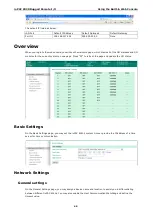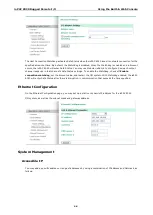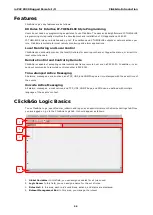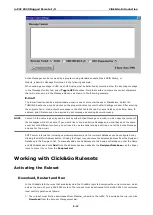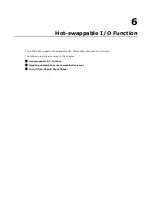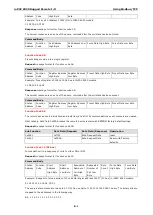
ioPAC 8020 Rugged Remote I/O
Click&Go Introduction
5-10
Internal Register
Internal Register represents a status flag to link the status of the first logic to the second one. Mostly it will be
used with the Timer function or to combine other input statuses together. The Internal Register function also
allows a PC to control the ioPAC’s local output when the remote output is controlled by Click&Go log (e.g.,
digital output, active message, e-mail and SNMP Trap). Select the IF condition for the Internal Register and
click on the property button to enter the Set Internal Register window.
NOTE
Internal Registers can be controlled by Modbus/TCP protocol. Refer to the appendix for the address list for all
the Internal Registers.
Timer
The Timer function can be used to control the timing of a logic rule in the IF conditions. “TIMEOUT” is the only
operator here. For example, uses can delay the triggering of an action or to repeat an action periodically. Select
the IF condition for Timer and click on the property button to enter the Internal Register Settings window.
In the above figure, the “Used in:” column indicates this Timer is also used in the Rule-0, which helps the user
to identify the relationship between rules. Also the Set Timer button will help to define the default value for the
Timer.
Schedule
The Schedule function allows users to set a starting point or time period for a task. For example, a pump needs
to start at 9: 00 PM and stop at 11:00 PM every Monday, Wednesday, and Friday. Select the IF condition to
Schedule and click on the property button to enter the setting window. For recurrent actions, select the
Recurrence checkbox and select the week days. If there a time period needs to be defined, specify the stop date
in the range column.
Host Connection Fail
The Host Connection Fail function refers to when an ioPAC 8020 detects the timeout from a remote Modbus/TCP
host and directs it to one of the IF condition of the Click&Go logic. Timeout can be used to trigger an action such
as resetting the attached power line on a DO or relay channel to reboot the device. Select the IF condition to
Host Connection Fail and click on the property button to enter the setting window.
THEN/ELSE Actions
Under the THEN column, you can specify up to 3 actions that will be performed when the IF conditions are
satisfied. 3 actions under the ELSE column will also be performed when the IF condition is NOT satisfied.
Possible actions include changing the status of a DO channel, or sending a message by SNMP trap, TCP, UDP,
or e-mail.
DO
DO refers to the action of controlling the local digital output channels that react to the IF conditions. Select the
THEN/ELSE action to DO and click on the property button to enter the DO Settings window.
NOTE
A Relay output channel is also referred to as a DO channel in the THEN/ELSE action fields.

